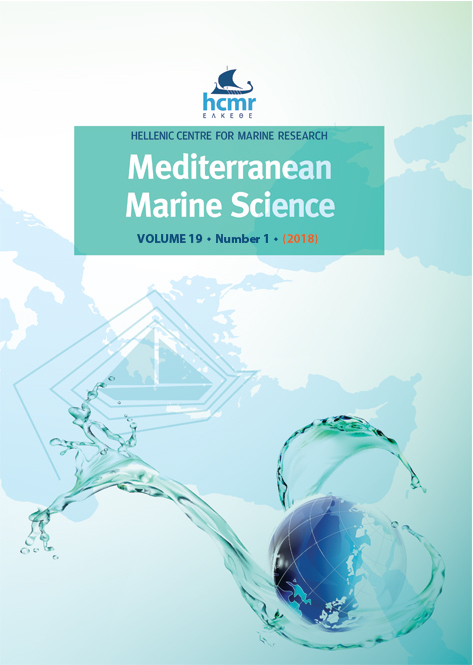Structure and temporal dynamics of a seaweed assemblage dominated by the invasive lineage 2 of Asparagopsis taxiformis (Bonnemaisoniaceae, Rhodophyta) in the Alboran Sea
Περίληψη
Asparagopsis taxiformis is a rhodophycean species composed of six genetic lineages, one of which is considered a relevant invasive component of the Mediterranean flora. In the present study we describe seasonal changes of the structure and biomass of the native community associated to Asparagopsis taxiformis in Granada (Southern Spain). Native community was represented by 18 Rhodophyta, 3 Chlorophyta and 4 Ochrophyta species. Biomass was dominated by A. taxiformis and Halopteris filicina. While in January A. taxiformis accounted for only 16% of the community biomass, an explosive dominance was observed only two months later, representing more than 90% of the algal biomass. Furthermore, low and generally stable values of species richness, Shannon’s diversity index and evenness were recorded during the study period. Given that A. taxiformis gametophytes are present year round, they are likely to pose a constant stress to native community development. This survey provides baseline information of macroalgal community structure useful for further studies to assess the true impact of the invasive lineage of A. taxiformis.
Λεπτομέρειες άρθρου
- Πώς να δημιουργήσετε Αναφορές
-
ZANOLLA, M., CARMONA, R., DE LA ROSA, J., & ALTAMIRANO, M. (2018). Structure and temporal dynamics of a seaweed assemblage dominated by the invasive lineage 2 of Asparagopsis taxiformis (Bonnemaisoniaceae, Rhodophyta) in the Alboran Sea. Mediterranean Marine Science, 19(1), 147–155. https://doi.org/10.12681/mms.1892
- Τεύχος
- Τόμ. 19 Αρ. 1 (2018)
- Ενότητα
- Research Article
Authors who publish with this journal agree to the following terms:
- Authors retain copyright and grant the journal right of first publication with the work simultaneously licensed under a Creative Commons Attribution Non-Commercial License that allows others to share the work with an acknowledgement of the work's authorship and initial publication in this journal.
- Authors are able to enter into separate, additional contractual arrangements for the non-exclusive distribution of the journal's published version of the work (e.g. post it to an institutional repository or publish it in a book), with an acknowledgement of its initial publication in this journal.
- Authors are permitted and encouraged to post their work online (preferably in institutional repositories or on their website) prior to and during the submission process, as it can lead to productive exchanges, as well as earlier and greater citation of published work (See The Effect of Open Access).





